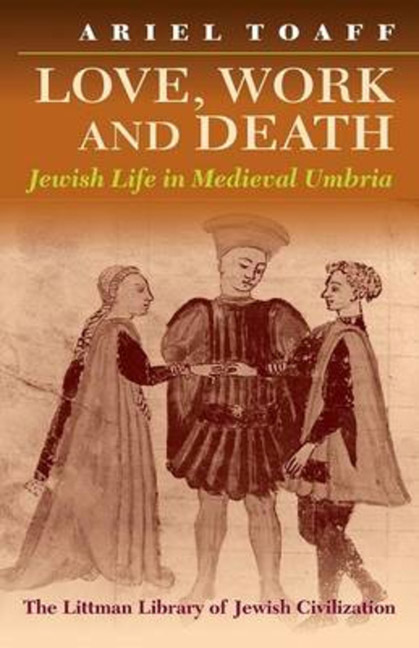Book contents
- Frontmatter
- Contents
- List of Figures
- List of Tables
- Abbreviations
- Note on Currency, Weights, and Measures
- Map showing Jewish settlements in Umbria
- Introduction
- 1 Sex, Love, and Marriage
- 2 Love of Life and Intimations of Mortality
- 3 Meat and Wine
- 4 The House of Prayer
- 5 Outcasts from Society
- 6 Witchcraft, Black Magic, and Ritual Murder
- 7 Converts and Apostates
- 8 The Pattern of Discrimination
- 9 Merchants and Craftsmen
- 10 Doctors and Surgeons
- 11 Banks and Bankers
- Bibliography
- Index
Introduction
- Frontmatter
- Contents
- List of Figures
- List of Tables
- Abbreviations
- Note on Currency, Weights, and Measures
- Map showing Jewish settlements in Umbria
- Introduction
- 1 Sex, Love, and Marriage
- 2 Love of Life and Intimations of Mortality
- 3 Meat and Wine
- 4 The House of Prayer
- 5 Outcasts from Society
- 6 Witchcraft, Black Magic, and Ritual Murder
- 7 Converts and Apostates
- 8 The Pattern of Discrimination
- 9 Merchants and Craftsmen
- 10 Doctors and Surgeons
- 11 Banks and Bankers
- Bibliography
- Index
Summary
FOR some time now the latter part of the thirteenth century has been seen as a key period in the history of Italian Jewry. During that time many Jewish communities sprang up in the regions of central and northern Italy: their appearance marked a turning-point after which Jewish history ceased to be purely that of the Jews of Rome and southern Italy.
The growth of these new communities, which archival documentation shows to have been surprisingly rapid and widespread, had its origin in the northward migration from Rome of Jewish merchants engaged in the money trade. From the last quarter of the thirteenth century onwards, singly or in groups, Jews moved from Rome along the great consular roads towards the towns of central and northern Italy, invited by the rulers of the communes to invest their capital on the local credit markets alongside or as a substitute for that of the great Tuscan or Lombard companies. This wave of migration spread rapidly through Latium, Umbria, the Marches, and Tuscany, creating communities in areas where Jews had never previously settled, or where their appearance had hitherto been brief and sporadic. These communities had many features in common, and developed a vigorous cultural, religious, and also to some degree linguistic identity which was to persist over time.
The results of the research presented here into the everyday life of the Jews of Umbria-one of the earliest regions of settlement by the ‘Roman’ wave of migration—can therefore act as a template for the reconstruction of the world-view of much of Italian Jewry in the late Middle Ages and for determining how people lived and the traditions and culture they shared.
This continuing research and reconstruction is important because usury and antisemitism still seem to be virtually the only aspects of the Jewish presence in Italy that medievalists have taken an interest in, and even recent studies have failed to provide historians with new information with which to draw a more accurate picture of medieval Jewish life. Such histories as do exist often seem to have been based on secondary sources, themselves based largely on Christian documents which by definition are unlikely to present the Jewish world accurately: here, Jewish communities are presented as monochromatic and one dimensional––closed and passive, and free from internal division and discord.
- Type
- Chapter
- Information
- Love, Work, and DeathJewish Life in Medieval Umbria, pp. 1 - 4Publisher: Liverpool University PressPrint publication year: 1996



